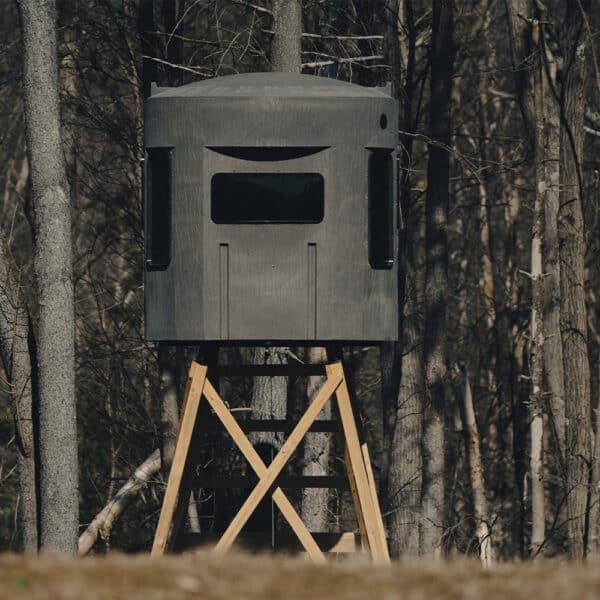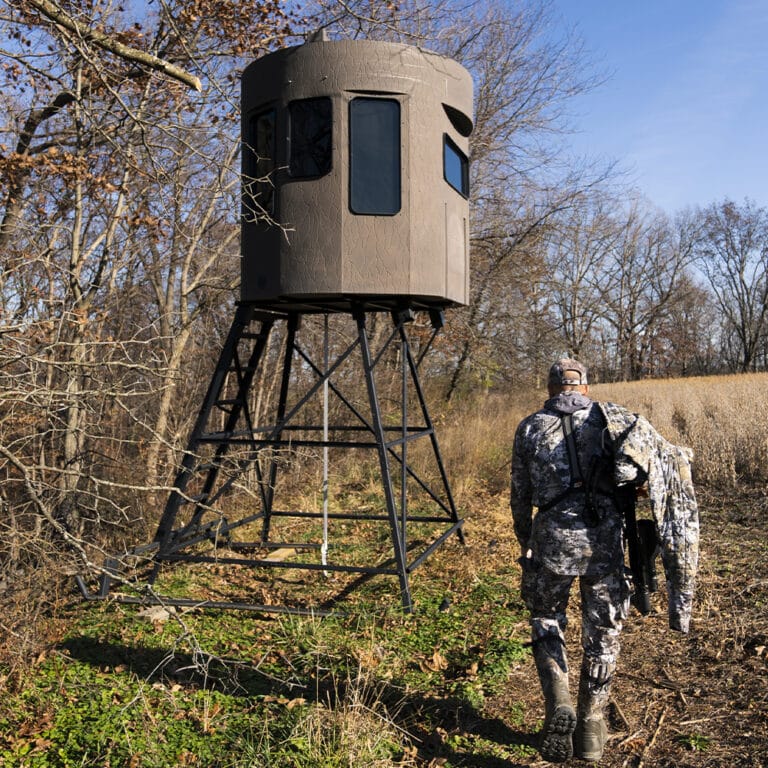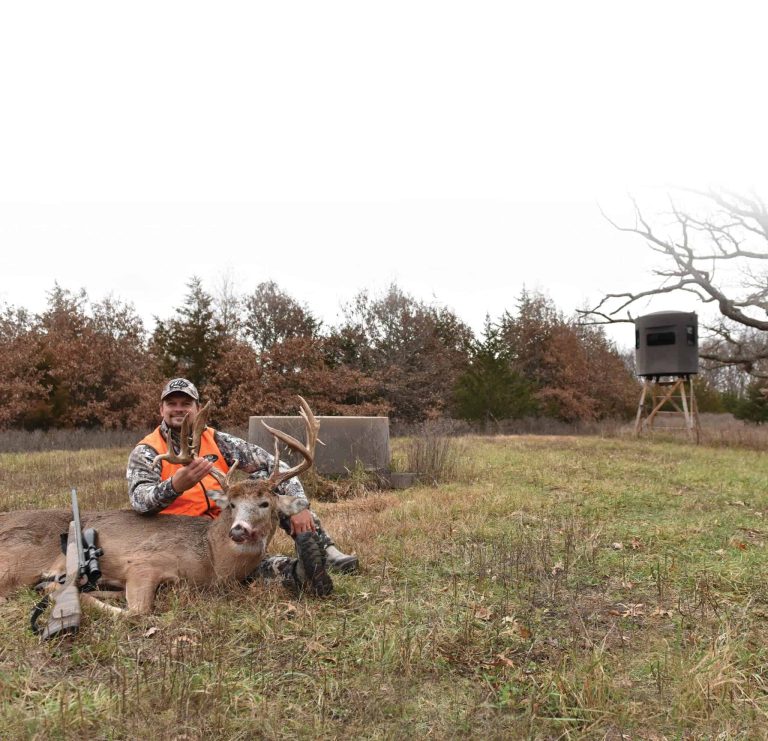As a general guideline, most hunters hunt bucks that are about three or four years old or older. This is the point where antlers start to become fully developed and they have developed a body structure that maximizes wild game meat potential. So, it’s important to be able to identify a buck’s age on the spot while you’re hunting. Check out our tips below for how to estimate a buck’s age the next time you’re in your Stump blind on a hunt.
Shoulders
Take a look at the buck’s shoulders. Are they larger than their hindquarters? Does their neck morph into their shoulders? If the hindquarters are larger and wider than their shoulders, that’s a young, one or two-year-old buck. If they have a clear separation between their neck and shoulders, that’s also indicative of a young buck. Shoulder muscles don’t really start becoming defined until the buck is three years old.
Tarsal Glands
You should also check the deer’s tarsal glands on the back of their legs at their knee joint. They will barely be stained on a young buck but will be darker and more prominently stained on older bucks three years old and older. A deer’s tarsal glands secrete an oily substance that the bucks use during rut season to mark territory. The hair on the tarsal glands houses different bacteria that react to the oils and deer urine. Deer will urinate on the tarsal gland to create a distinct scent that will mark their territory for any does and other bucks in the area. Older, dominant bucks do this more frequently, so their tarsal glands are darker from the stains. When a buck reaches five years old, the staining might even be over the entire leg.
Antlers
Antlers can be an indicator of age, but this is one factor that’s a bit more ambiguous. If the deer herd isn’t getting the proper phosphorus, calcium, and other nutrients in their diets, their antlers won’t grow very large, no matter how old they are. That said, there are still some general guidelines. For example: By four years old, bucks should have large antlers with a solid base and multiple points.
Legs
A one-year-old buck will have legs that look like they’re too long for its body. Then they even out over the course of ages two and three, and by four years old they start going the other direction and their legs will look too short for their body.
Other Characteristics
Bucks five years old or older will have a sagging pot belly and a saggy back. Bucks eight years old and older will start to have loose skin and their antlers might become curved or wavy.
Spotting the signs of an ethical harvest that will yield the highest result of wild game meat for your table is an important aspect of hunting. The next time you’re hunting from a Stump blind and you see a buck approaching in the distance, hopefully you’ll be able to judge its age based on the info above. Our Stump blinds, like the Stump 2, have large windows that open silently, so you should be able to sit with the windows closed and observe before making your move.
What do you look for when you’re trying to estimate a buck’s age? Let us know in the comments below!






Things to Consider When Planning an Out-of-State Hunt
Why October is the Perfect Time for a First-Time Hunter